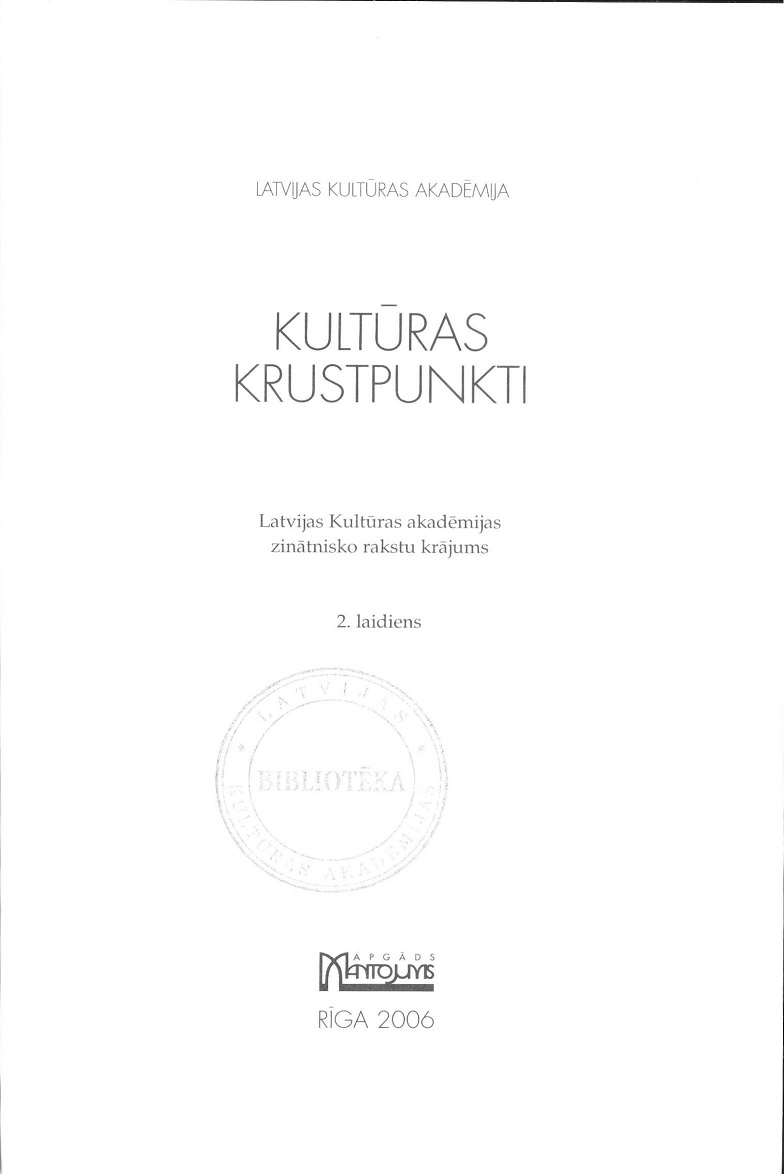Ragana Aspazijas dramaturģijā
A Witch in Aspazija's Plays
Author(s): Zane ŠiliņaSubject(s): Theatre, Dance, Performing Arts, Cultural history, Latvian Literature, Drama
Published by: Latvijas Kultūras akadēmija
Keywords: Aspazija; Elza Rozenberga; Latvian literature; play; playwright; witch;
Summary/Abstract: A witch is a frequently used motif in the poetry and plays of Aspazija (real name Elza Rozenberga, 1865-1943), an outstanding Latvian poetess and playwright. It can be said that a witch, as interpreted by Aspazija, is not only a literary image, but also bears a special meaning: it is a way of poetess' self-expression that manifests the Aspazija's contradictory self, as well as the relations between art and life, the spiritual and the real, escalating them up to the greatest degree of dramatism. The paper focuses on Aspazija's play "The Witch" ("Ragana"). As a complete dramatic work the volume of which is 5 acts it is published only once - in the magazine "Mājas Viesa Mēnešraksts", 1896, No. 10,11 and 12. Later, respecting Aspazija's wish, it is published only in a form of a fragment, cutting the action in the middle of the 4th act, 10th scene. In this paper the play "The Witch" is analysed in the context of Aspazija's early poem "The Daughter of the Sun" ("Saules meita") and M. Lermontov's poem "The Demon". Thus, the most essential tendencies in Aspazija's literary quests can he revealed.
Journal: Culture Crossroads
- Issue Year: 2/2006
- Issue No: 1
- Page Range: 335-348
- Page Count: 14
- Language: Latvian

